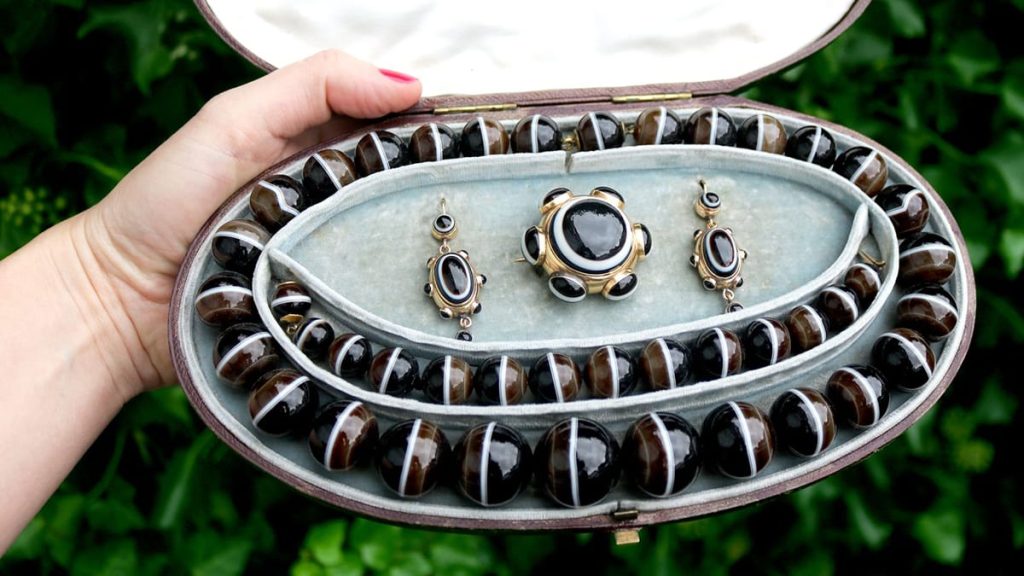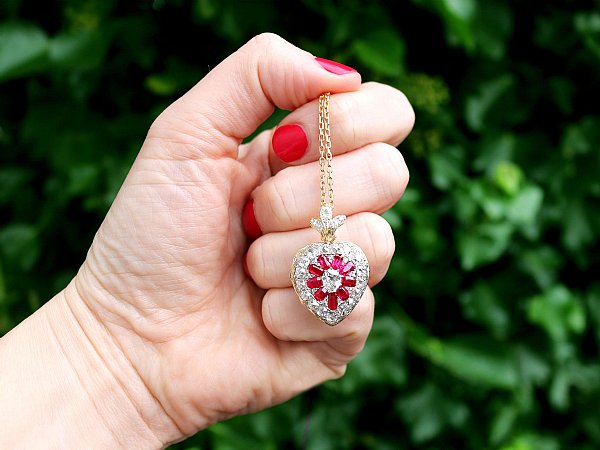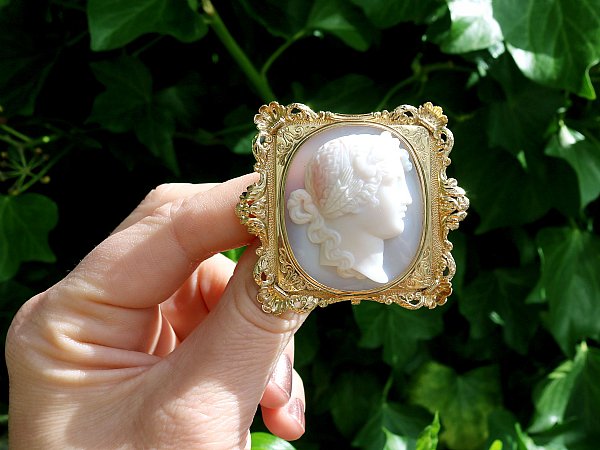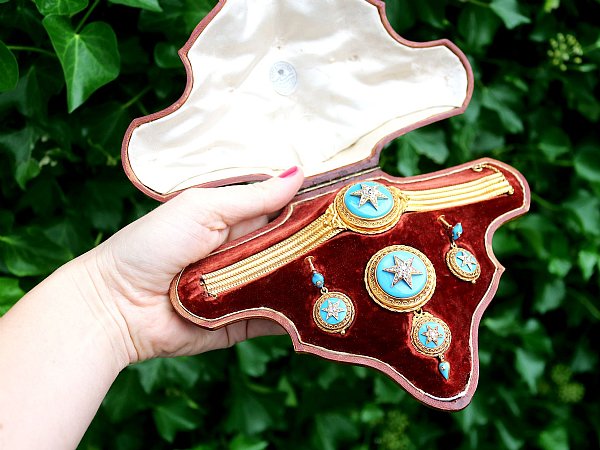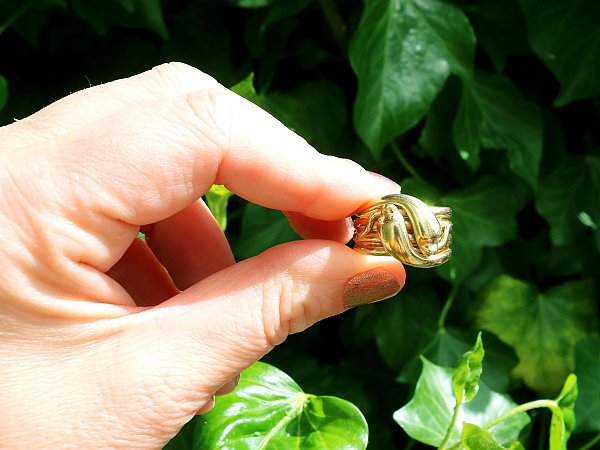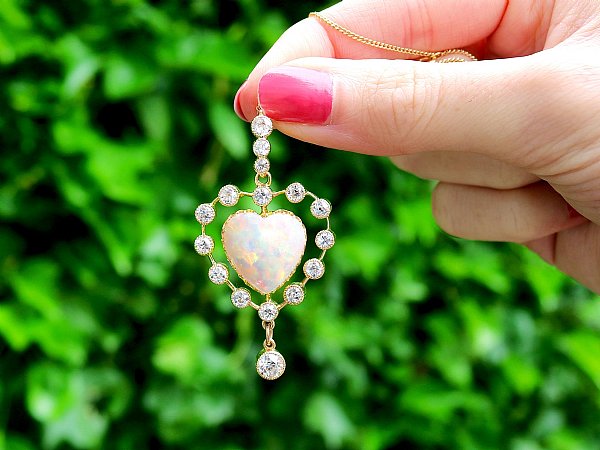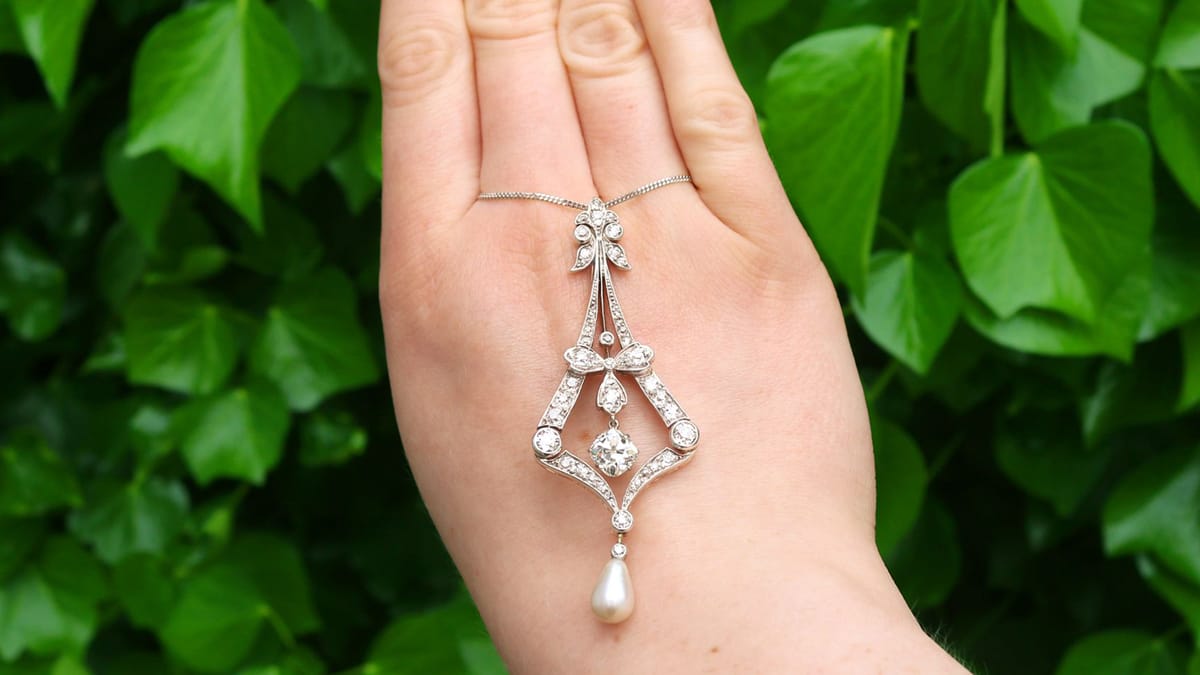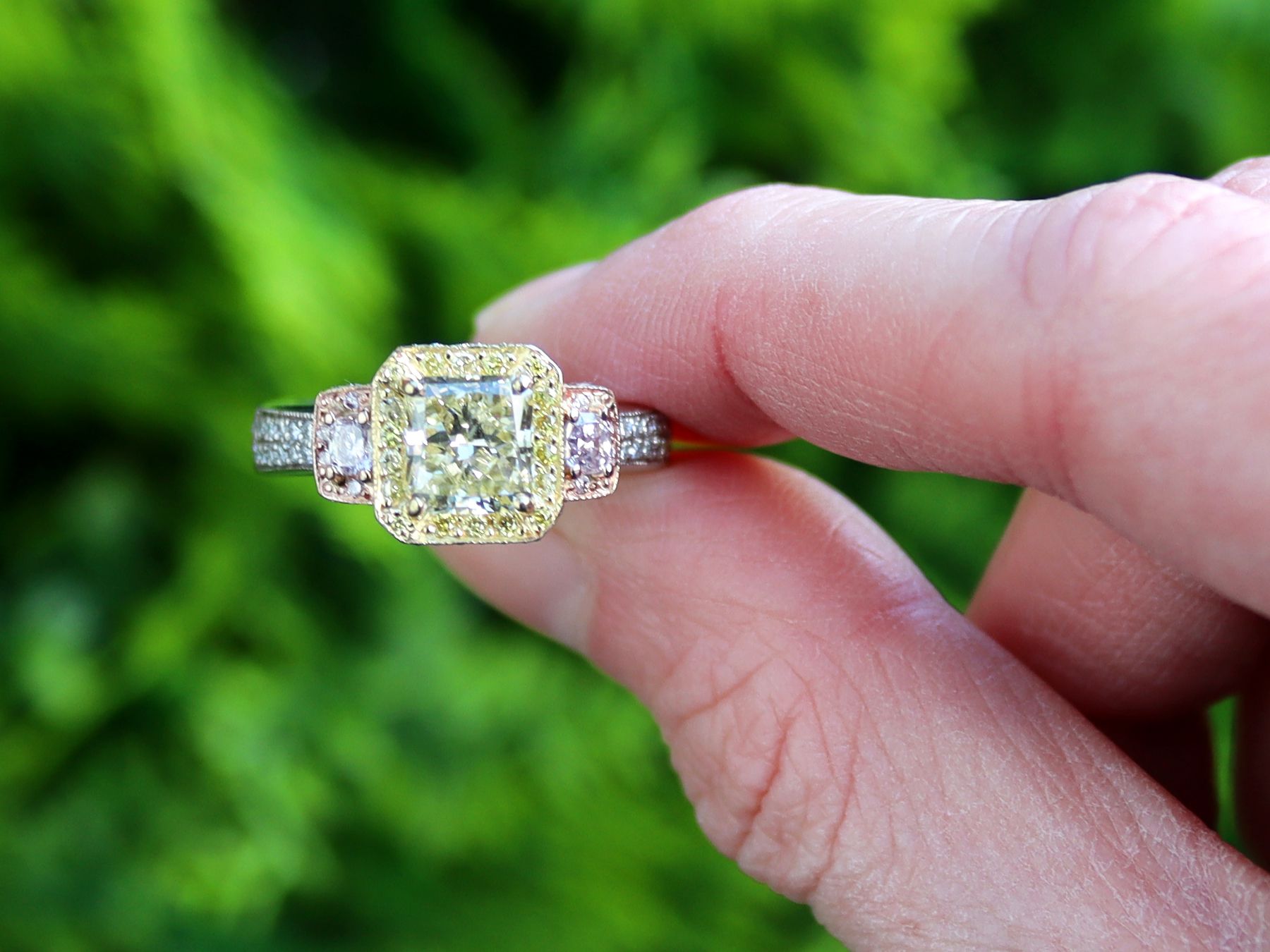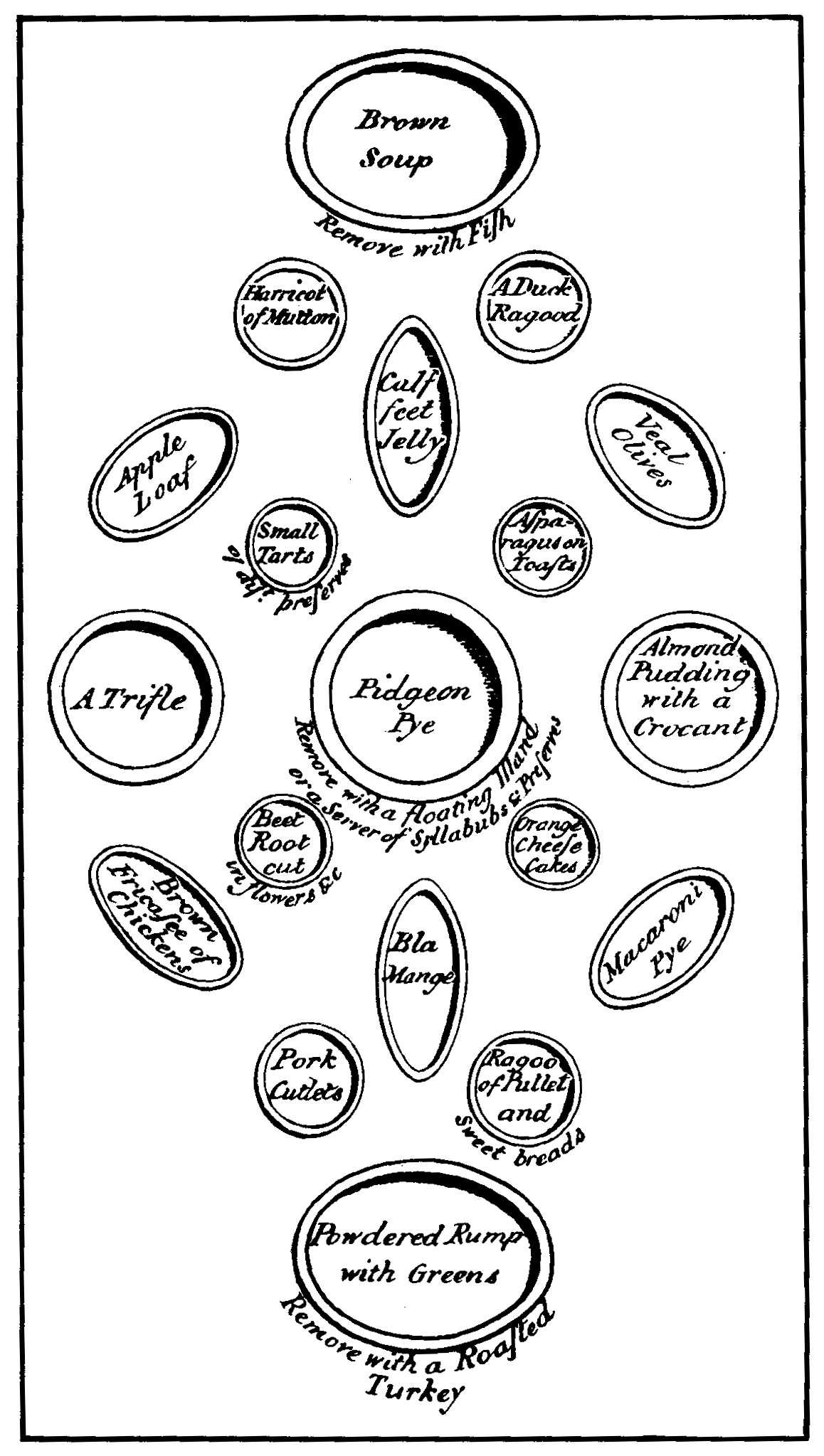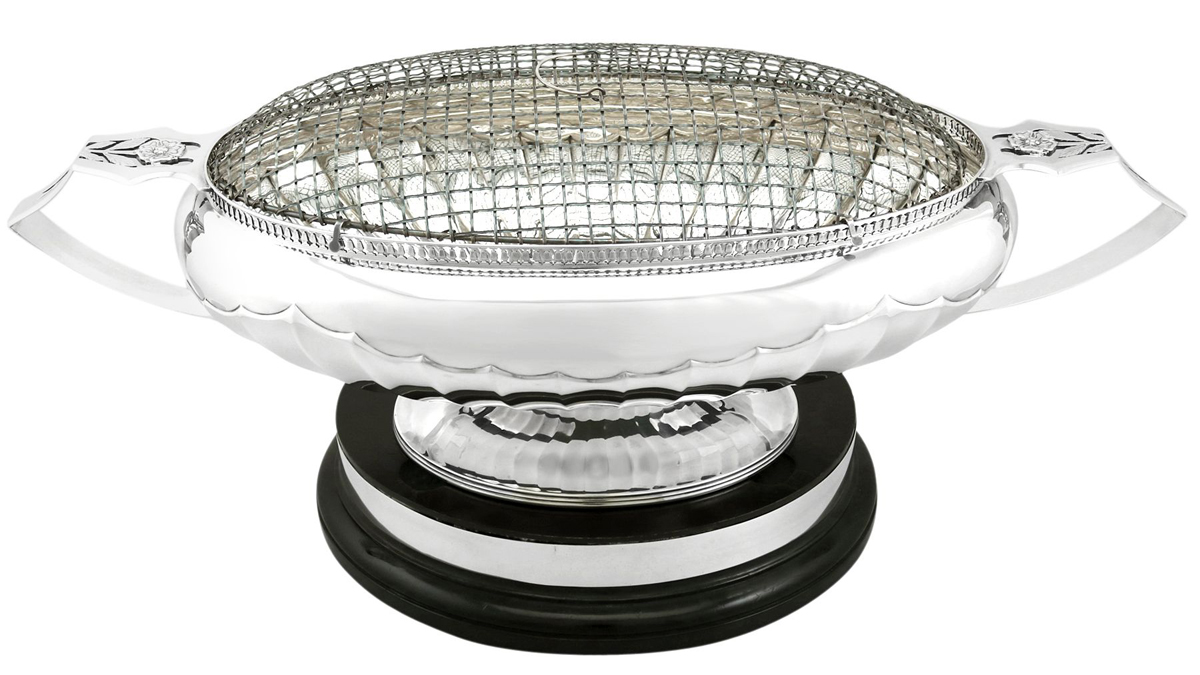Lots of popular antique jewellery stems from the Victorian and Edwardian periods. If you’re struggling to figure out the differences between the two time periods let us guide you.
Date Differences
The Victorian era spanned from 1837 to 1902, correlating with Queen Victoria’s reign over Britain, followed by the Edwardian Era which spanned the reign of King Edward VII from 1901 to 1910. Though King Edward VII succeeded his mother, his reign was considerably shorter than the late Queen Victoria’s. These core eras shaped Britain and the world we know today through transformative social changes, industrial revolution and political reform.
Style Differences
The styles of the Victorian and Edwardian eras are very different. The Victorian era is believed to be more conservative, with a sense of sombreness than was lifted in the Edwardian Era. Styles are, of course, different depending on the subject, but for this case let’s focus on jewellery.
Victorian jewellery can be characterised by their elaborate designs that incorporate natural motifs. Edwardian jewellery uses more intricate details with more focus on geometric and abstract shapes.
It’s good to remember industrial impacts on style and popularity. As a result of industrial revolution, jewellery became more accessible than ever before. Whilst Queen Victoria herself was a jewellery lover, the public was able to gain access to similar styles through new industrial advances, making this period known for its accessories. This is also noteworthy as the Edwardian era leaned back into hand crafted jewellery for status, leaning away from mass production in favour of unique and intricate pieces.
Victorian Jewellery
Popular Victorian jewellery can be seen in a couple different styles that respond directly to Queen Victoria’s life, such as romantic jewellery and mourning jewellery.
Romantic Period Jewellery
Romantic style jewellery is often from the early Victorian era; the early years of Queen Victoria and Prince Albert’s marriage. The jewellery reflected this romantic period and is reflected in the use of heart shapes, knot and hand motifs, themes commonly used to symbolise an eternal bond.
Prince Alberts engagement ring to Queen Victoria featured a snake, set with an emerald. As a result of this, snake motifs were also very popular at the time. Cameos with depictions of loved ones, large brooches and Victorian lockets containing strands of a partners hair were also very popular items amongst the romantic period, with the sense of keeping them close to your heart.
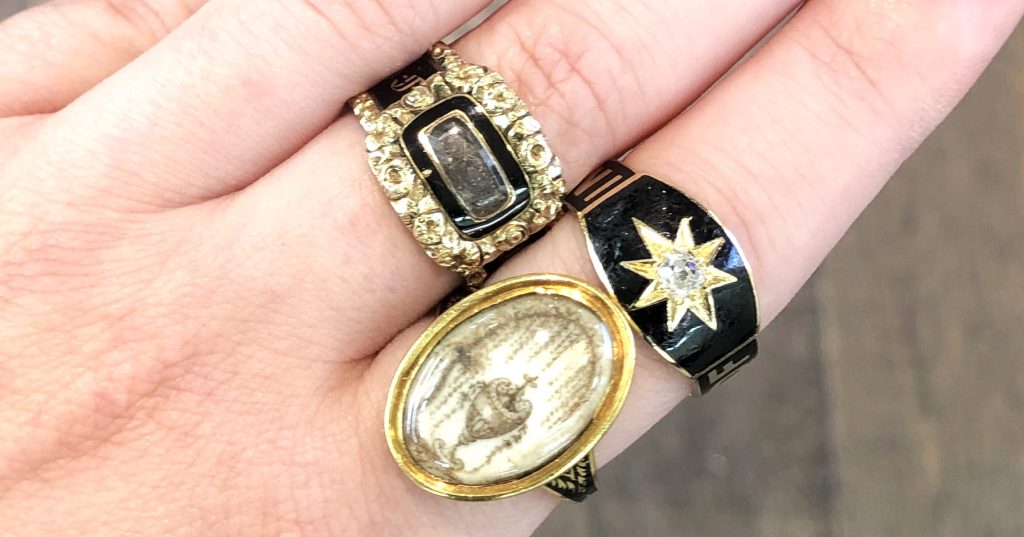
Mourning Jewellery
Mourning jewellery became very popular towards the end of Queen Victoria’s reign as she spent the rest of life in a state of mourning following the death of her husband Prince Albert. As a figurehead, she popularised a style of mourning jewellery that favoured sentimental and romantic grief.
Earlier Georgian mourning jewellery incorporated darker themes with coffins and skulls, whilst Victorian mourning jewellery developed the period’s overarching motif of flowers to incorporate weeping willow trees, fallen petals and softer themes of angels and cherubs.
Edwardian Jewellery
The Edwardian era is explained to bring a sense of joy back to the mourning Britain. King Edward VII’s reign is depicted as a time of frivolity and luxury for the upper class, where displays of material wealth was encouraged. Handcrafted jewellery became favoured once again, due to the delicate and ethereal styles that drew inspiration from the 18th century.
If we think of late Victorian Britain as a time of darkness and mourning, King Edward brought the light and joy back, and is reflected so in the use of bows, ribbons and softer appearances in jewellery.
White Metals on White Gems
Household name Cartier became the royal jeweller to King Edward, pioneering the ‘white on white’ trend of diamonds set in platinum to create dazzling designs. Platinum was heavily favoured as the material of choice during the Edwardian period as it was strong enough to create the intricate almost ‘lacy’ designs of the time. These delicate designs can be seen throughout Edwardian pieces, including the popular ‘millegrain’ decoration. ‘Millegrain’ decoration gave jewellery settings a softer look with a delicate dotted boarder, particularly popular within Edwardian engagement rings.
The ’white’ theme of the Edwardian era contributes to why diamonds and pearls are so often seen in Edwardian jewellery. At the time, luminous antique pearl jewellery held more value than diamonds and were seen as a true symbol of status and wealth. Combinations of the two are not only complimentary but symbols of importance. Pale gemstones such as opals were also popular, contributing to the white theme. However, white was not the only colour of this luxurious era. Use of bright gemstones such as amethyst, topaz and garnet created bold and eye-catching pieces.
Art Deco Overlap
Whilst extravagant, the Edwardian period was short lived, with King Edward’s reign spanning under 10 years. Edwardian era overlaps with Art Deco jewellery style, which followed this period. As for mentioned, Edwardian designs harked on intricate, curvilinear formations that shifted to the more geometrical shapes of 1920s Art Deco. Pieces produced around 1912-1914 are often classed as ‘late Edwardian transitional’ or ‘transitional early Art Deco’ due to the overlap in styles.
It is interesting to see the differences between both eras, reflected in the jewellery of the time. AC Silver is please to offer an impressive range of both Victorian jewellery and Edwardian jewellery.
Explore more jewellery periods and styles

